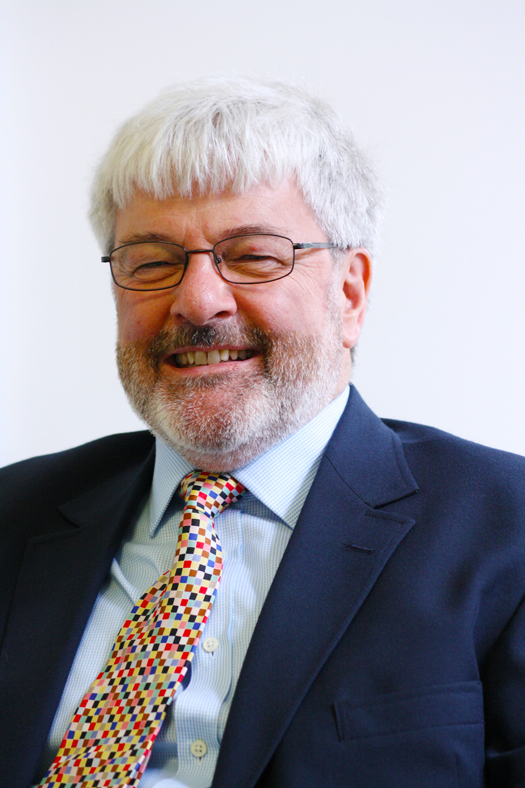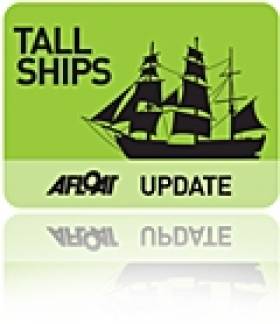Displaying items by tag: STI
Sail Training Int Appoints New CEO
#TALL SHIPS – Sail Training International has appointed a new Chief Executive. He is Peter Cardy, Chief Executive of the charity Aquaterra and a former Chief Executive of the UK Maritime and Coastguard Agency (MCA). He joins the STI team at its offices in Gosport, England, this month.
Peter has an MSc in Social Policy and a BA in Social Theory and Politics. His career began in adult education and then moved into general management. He has been the Chief Executive of several major charities, and in his current assignment with Aquaterra he has a staff of 350 and runs a budget of £14million. His career has also given him international experience, and current volunteer appointments include: Patron of the Sea Change Sailing Trust, a member of the RYA Government Affairs Committee, and Visiting Fellow at the Cass Business School, City University (London).

Peter Cardy is the new Chief Executive of Sail Training International
Peter's first sail training experience was at the age of 15, since when he has undertaken countless voyages on sail training vessels of all sizes. He has been a volunteer crew on a number of vessels and sails regularly with the Jubilee Sailing Trust as Watch Leader.
He has helped Sail Training International in recent years with advice on regulatory issues and other assistance. In early 2010, while Chief Executive of the MCA, he facilitated and joint-hosted with Sail Training International a reception for Flag State Regulators at the headquarters of the International Maritime Organisation.
"Peter is clearly uniquely well qualified to manage Sail Training International as our Chief Executive and help lead the organisation to further success," says Nigel Rowe, STI's President and Chairman. "He is well known to us, he is an experienced sail trainer, and he has considerable expertise in senior management roles in the charity sector. He will make a significant contribution to our work."
"I have always admired Sail Training International for its diverse activities in developing and promoting sail training around the world and for what it has achieved over the past decade," says Peter Cardy. "Sail training was certainly a life-changing experience for me as a boy. Working with STI's Trustees, staff, members and international cadre of volunteers will enable me to make a very direct contribution in the international arena to an activity I love."
Dunmore East Bids TallShips Farewell
As the Russian 'A' class Mir passed the LE Aoife off Dunmore East in mid-morning, the largest tall ship of the festival headed the start of the Parade of Sail, writes Jehan Ashmore.
Crowds left their cars in fields outside Dunmore East and descended into the harbour and surrounding headlands to witness the highlight of the four-day festival. Adding to the scene were the numerous leisure-craft, yachts and intrepid kayakers that gathered to greet the procession which took some two hours to pass the fishing harbour.
No sooner had the fully-rigged ship Mir had slipped beyond the anchored naval vessel that the gaff schooner Johanna Lucretia, under full sail came closer into view. She was closely followed by the Ocean Youth Trust Scotland's Bermudan cutter Alba Explorer.

The Russian 'A' class Mir passing the LE Aoife off Dunmore East. Photo: Jehan Ashmore
Of all the 45 tallships participating the Columbian Navy's barque ARC Gloria presented the most colourful entrant. She proudly flew a large horizontal tricolor of yellow, blue and red representing the South American nation.
When it came to the turn of the Europa to pass the LE Aoife, the tug Bargarth gave a wonderful send-off with the traditional display of water jets shooting sky-high, nearly reaching the top of the three-masted barque.
Marking the tail-end of the parade was the Jubilee Sailing Trust's Lord Nelson, another barque that departed the estuary with the Hook Head Lighthouse forming a majestic backdrop.
At this stage several of the large tallships could be seen on the far horizon in preperation to the start of the first race leg of this years Tall Ships Races....next port of call Greenock!
- Waterford
- ship
- Dunmore East
- Lord Nelson
- Waterford Estuary
- LE Aoife
- Sail Training International
- Jubilee Sailing Trust
- Tug
- Hook Head
- Tall
- JOHANNA LUCRETIA
- TallShips
- Waterford Harbour
- JST
- Europa
- Fullyrigged ship
- STI
- ARC Gloria
- Hook Head Lighthouse
- Mir
- Gaff schooner
- Ocean Youth Trust Scotland
- Bermudan cutter
- Alba Explorer
- Columbian Navy barque
- Bargarth
- Fastnet Shipping
It's Official: Third Time Tallships for Waterford
Scenes of the tallships moored alongside the north and south quays and the surrounding festivities are captured by Gary O'Mahony. SCROLL DOWN FOR PICS.

The Columbian Navy's Sailing Training Ship ARC Gloria. Photo: Jehan Ashmore
This is the second year in which the city has been the host port of the Tall Ships Race and the prestigious event is to return for a third time. The next occasion has not been confirmed but it would be several years away according to Sail Training International, the organisers of the famous race.
Lord Nelson Heads for Waterford
As the Tall Ship STS Lord Nelson nears Carnsore Point off Wexford this evening the barque will be one of the many vessels participating in the Waterford Talls Ships Races Festival, writes Jehan Ashmore.
Joining Lord Nelson are three other UK entrants, they are the Jean de la Lune, Pelican of London and Royalist now celebrating her 40th anniversary. Together these tallships belong to the 'A' class vessels, the largest of the tallships. The impressive array of A class vessels includes four ships alone from The Netherlands with the Astrid, Eendracht, Europa and Wylde Swan, a schooner built in 1920.
From Norway is the fully rigged tallship Christian Radich and Sorlandet. The Poles are coming with their Pogoria. Neighbouring Russia are sending their impressive 108m long Mir which has 26 sails and has a 200-strong crew though the 1987 built vessel can be sailed with just 30. The final A class entrant is from outside Europe, the Columbian 1,300 tonnes Gloria, a three-master of over 60 metres long.
In addition to this exciting line-up are the 'B' and 'C' class which in total brings 45 tallships of all shapes and sizes to the quays of the River Suir. The crystal city will be host to over 1,000 trainess and over 400 professional crew who will take part in the colourful 'Crew Parade' held on Friday. For a full list of tallships and accompanying photos go to www.waterfordtallshipsrace.ie/the-race/the-tall-ships/
The spectacle of the festival will culminate in the early hours of Sunday when the fleet departs the city and heads downriver with a 'Parade of Sail' in the estuary of Waterford Harbour. As the tallships pass offshore of Dunmore East, this will mark the start of the first race-leg to Greenock.
The famous race is organised by Sail Training International (STI) a charity established to harness sail training to develop and educate young people, regardless of nationality, culture, religion, gender or social background.
The STI can trace its roots with the creation of the Sail Training International Race Committee which organised the first race of sail training tall ships in 1956. Their website is www.sailtraininginternational.org/

































































